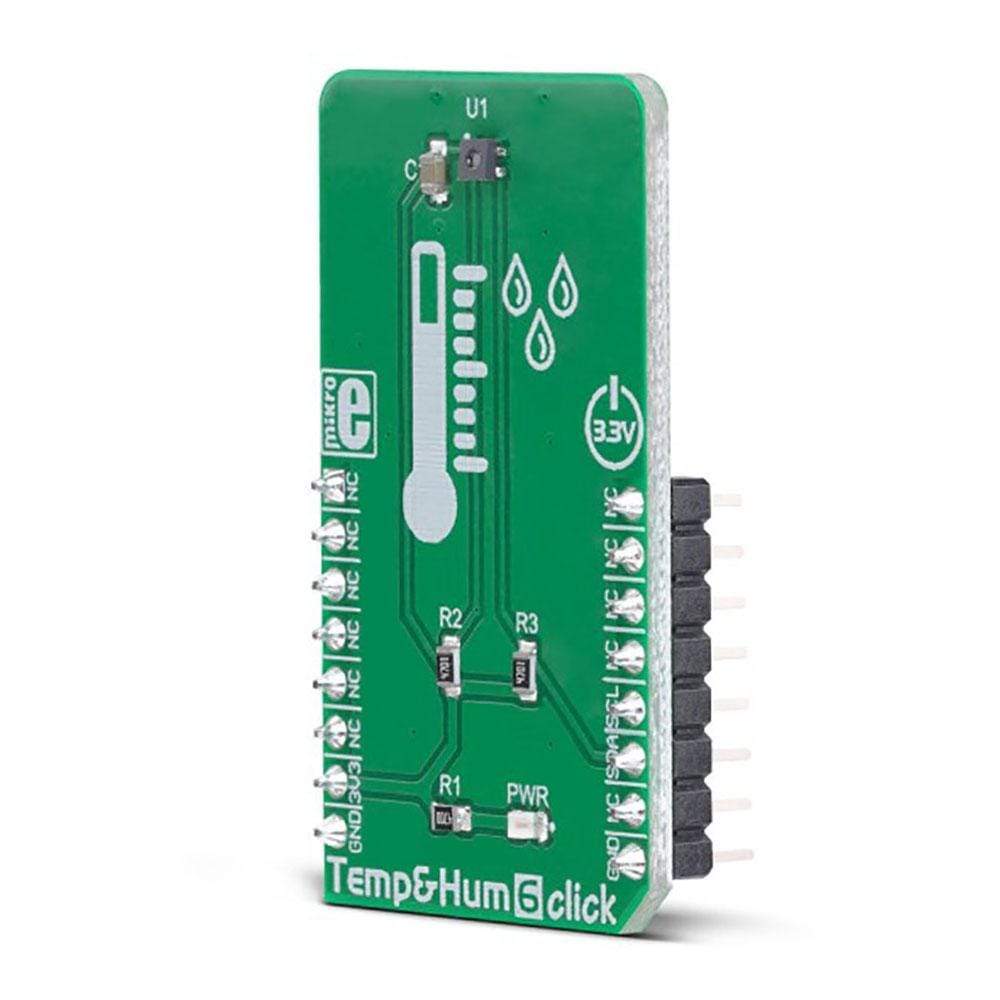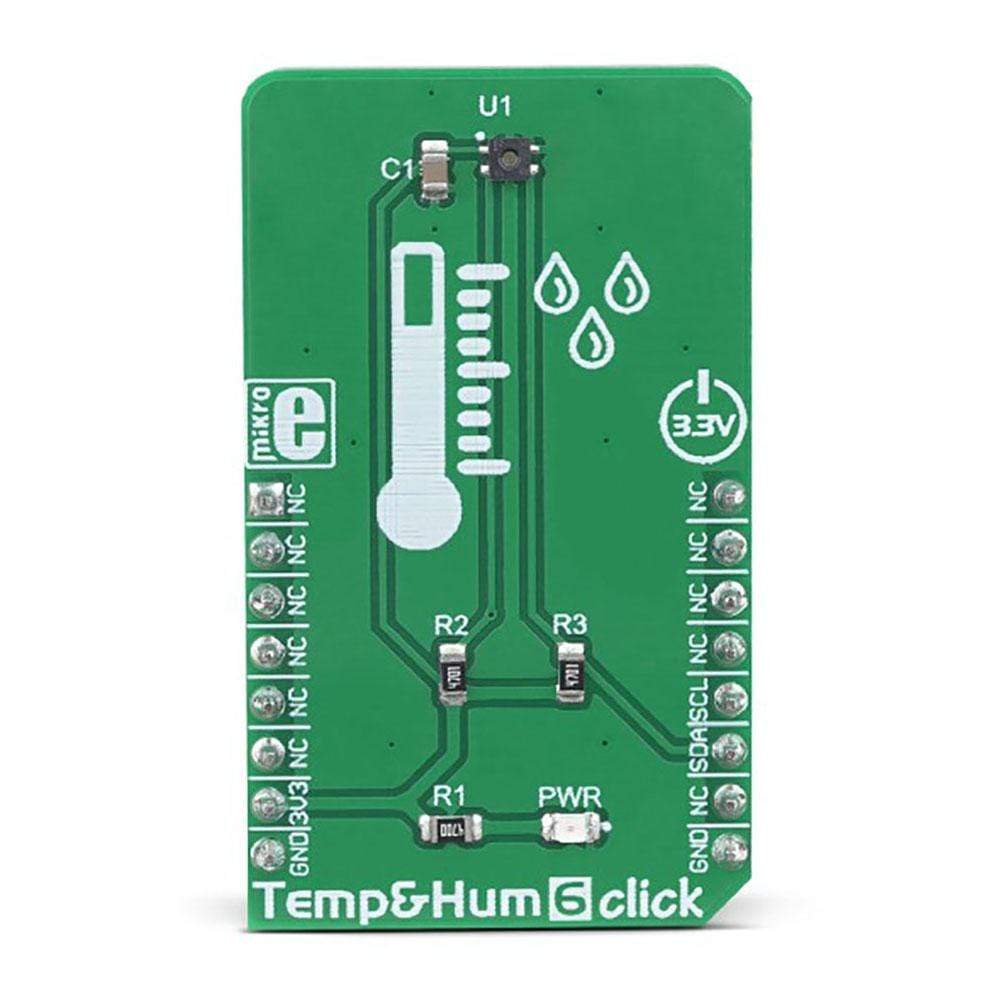


Key Features
Overview
The Temp&Hum 6 Click Board™ is a smart temperature and humidity sensing Click Board™, packed with features that allow straightforward integration into any design. It accurately measures a wide range of temperature and relative humidity values. The ENS210 sensor IC used on this Click Board™ is an ultra-accurate temperature and relative humidity sensor (RH), featuring very low drift, very low power consumption, small hysteresis, and excellent long-term stability. Thanks to its advanced logic back-end, the sensor IC can offer measurement readings in Kelvin and %RH directly over the I2C interface.
Temp&Hum 6 Click Board™ is supported by a mikroSDK compliant library, which includes functions that simplify software development. This Click Board™ comes as a fully tested product, ready to be used on a system equipped with the mikroBUS socket.
Downloads
Das Temp&Hum 6 Click Board™ ist ein intelligentes Click Board™ zur Temperatur- und Feuchtigkeitsmessung, vollgepackt mit Funktionen, die eine einfache Integration in jedes Design ermöglichen. Es misst präzise eine große Bandbreite an Temperatur- und relativen Feuchtigkeitswerten. Der auf diesem Click Board™ verwendete ENS210-Sensor-IC ist ein ultrapräziser Temperatur- und relativer Feuchtigkeitssensor (RH) mit sehr geringer Drift, sehr geringem Stromverbrauch, kleiner Hysterese und ausgezeichneter Langzeitstabilität. Dank seines Advanced Logic Back-End kann der Sensor-IC Messwerte in Kelvin und %RH direkt über die I2C-Schnittstelle liefern.
Temp&Hum 6 Click Board™ wird von einer mikroSDK-kompatiblen Bibliothek unterstützt, die Funktionen enthält, die die Softwareentwicklung vereinfachen. Dieses Click Board™ wird als vollständig getestetes Produkt geliefert und ist bereit für den Einsatz auf einem System, das mit der mikroBUS-Buchse ausgestattet ist.
| General Information | |
|---|---|
Part Number (SKU) |
MIKROE-3270
|
Manufacturer |
|
| Physical and Mechanical | |
Weight |
0.018 kg
|
| Other | |
Country of Origin |
|
HS Code Customs Tariff code
|
|
EAN |
8606018713974
|
Warranty |
|
Frequently Asked Questions
Have a Question?
Be the first to ask a question about this.



